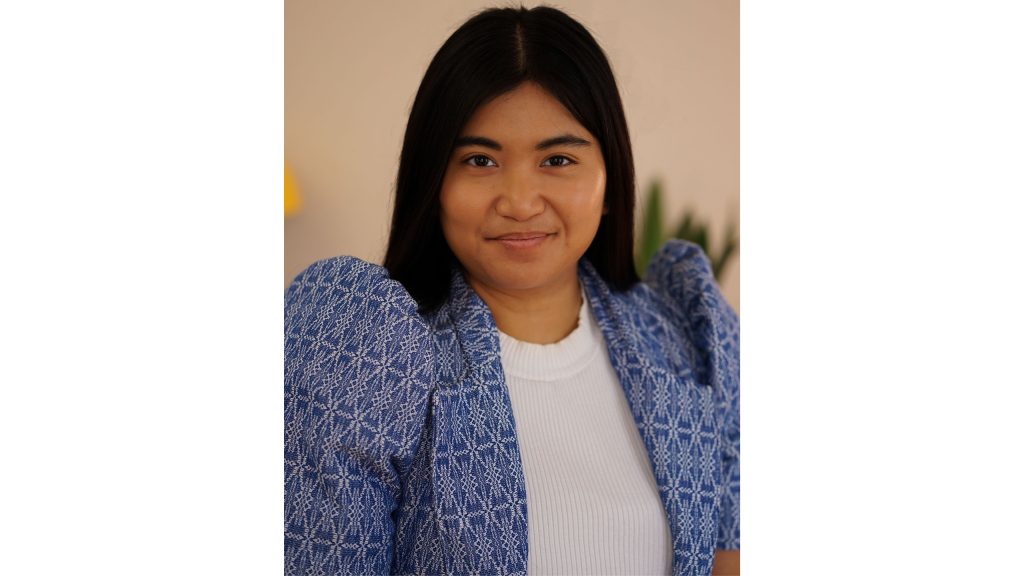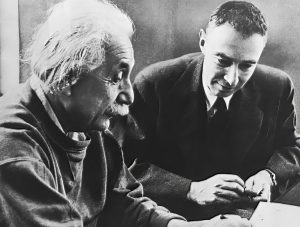
“The interdisciplinarity of the question [of atomic legacy] was so fascinating to me and drove me to seek out what the scientists were saying versus what the policymakers were saying versus what the art and cultural historians were saying. I couldn’t stop researching it. And I still can’t.”
The Spark
The fact that Anna Gatdula’s research focuses on operatic and film music of the American Atomic Age is likely not what one would expect of a musicologist with an undergraduate degree in vocal studies and a minor in English literature. Yet when Gatdula, an assistant professor in the department of music, began her doctoral studies at the University of Chicago, she found herself immersed in celebrations of atomic heritage.
Gatdula entered the University of Chicago in the fall of 2017, which also happened to be the 75th Anniversary of Chicago Pile-1, the first nuclear chain reaction on December 2, 1942. The university was celebrating the historic event with a symposium of lectures, musical performances and art titled “Nuclear Reactions.”
Excited for her new adventure in doctoral studies, she jumped into the symposium events with both feet, attending events and lectures from across the university. “The interdisciplinarity of the question was so fascinating to me and drove me to seek out what the scientists were saying versus what the policymakers were saying versus what the art and cultural historians were saying,” recounted Gatdula.
One of her cohort-mates, Ted Moore, had been commissioned to write a piece for carillon and electronic tape, titled the curve is exponential, for the symposium. To better understand how to portray quantum physics through music, Moore was working his way through Richard Rhodes’ The Making of the Atomic Bomb. This paralleled Phillip Glass’ composition journey for his 1976 opera Einstein on the Beach, which Gatdula would later reflect upon in her own research.
Amidst the symposium’s spectacle came a true spectacular culminating event. At the exact time of the chain reaction, the university had commissioned Chinese pyrotechnic artist Cai Guo-Qiang to create a pyrotechnic artwork marking the event. Guo-Qiang created an explosion of rainbow-colored pyrotechnics dissolving into a mushroom cloud shape that awed the gathered crowd.
This spectacle of the “Nuclear Reactions” symposium led Gatdula to shift her dissertation research from American experimentalism to the American Atomic Age.
Observing the Spectacle
The atomic bomb, the legacy of the Manhattan Project, and the scientists and politicians who led the development of this world-altering technology have long since been a fascination of historians and artists. Numerous films, operas, books, musical works and pop songs have been created as generations of people around the globe grapple with the aftereffects of atomic technology. “There is a reason that we are becoming fascinated again, or having a renewed fascination, with the atomic spectacle in an age of a lot of wars abroad,” noted Gatdula.

The latest of these works, Christopher Nolan’s Oppenheimer, has been part of the mainstream pop conversation since its release in July 2023. Who can forget the summer spectacle that was Barbenheimer?
When discussing what readers should listen for in Ludwig Göransson’s score for the blockbuster, Gatdula noted the grounding in American minimalism. “Although Ludwig Göransson doesn’t articulate his predecessors outright, there is so much Philip Glass in the score in the way that rhythm and harmonic repetition works,” she emphasized. “There is something interesting about American minimalism and its use in depicting new scientific discoveries.”
The spectacle of Oppenheimer and its predecessors and the narrative they create and recreate, of America’s position as a global superpower, became central to Gatdula’s research, which she is crafting into a book titled Atomic Spectacle: The Aesthetic Strategy of a Nuclear Empire. “The idea being that it is a choice to represent the atomic bomb as spectacle,” Gatdula noted. “And it is a choice that is often made ideologically.”
However, spectacle and American minimalism are not the only things viewers will notice in Oppenheimer. Some of the most powerful moments come about not from spectacle, but instead from silence.
“In the scene leading up to the atomic explosion when all of the scientists and military people are preparing for the Trinity Test, there’s lots of music happening. Ludwig Göransson is using a really interesting mix of orchestral sounds with deep synthesizer sounds and electronic music,” reflected Gatdula. “The music is intensifying and building up to the Trinity Test and the countdown. But when the film gets to the initial flash and explosion of the bomb, there is silence. Though it’s not just silence, right? It’s a designed silence.”
This silence is historically accurate as it took observers of the Trinity Test, who were 10 miles away, almost a full minute and a half to experience the sound of the bomb they could already see. Göransson’s score along with the sound design of the film reflect this in multiple points throughout the film when Oppenheimer is experiencing profound inner turmoil, conflict or angst. As Gatdula noted, “Silence is not the absence of sound necessarily; there is a specific design around it.”
Exploring the Silence
Silence is a new path that Gatdula’s research has taken her down. When it comes to the legacy of the atomic bomb, what are the stories history has left behind, and whose voices are not being heard?
In her class, “Music in the Atomic Age,” Gatdula has recently been lecturing on the Hibakusha, Japanese survivors of the atomic bombs in Hiroshima and Nagasaki.
“We are giving testimony to these histories and these survivors and discovering what it means to teach about witnessing in a way,” she reflected. “In my dissertation, I didn’t get to write much about the Japanese perspective and responses. I’m learning a lot from my students, their interpretations and what stands out to them.”

CBRN Timo, CC BY-SA 4.0, via Wikimedia Commons.
Gatdula also hopes to include research on Geiger counters and their use by the Navajo political movement Diné No Nukes’ Radiation Monitoring Project. The RMP provides Navajo citizens with radiation monitoring technology, such as Geiger counters, and teaches them how to use it.
“The Geiger counter is an instrument that makes something that is silent, in this case radiation, into something that is heard,” she reflected. “And how important it is to have that translation of silence to sound in order to find the silent deadly killer of radiation.”
In reflecting on how her interest in this subject began, Gatdula noted that while Guo-Qiang’s pyrotechnics wowed the crowd gathered for the 75th Anniversary celebrations in 2017, in retrospect it was quite disturbing. “Why are we celebrating with the image of the mushroom cloud? The image of that has represented violence for so many.”
She also learned later that students had staged a “die-in” at the event in protest of the celebrations. “I always think of how there was this spectacle that was commissioned by the university and then there was a counter spectacle of people placing their bodies in protest of the narrative that had been deemed by the institution.”
Spectacle and silence: are they opposites or sympathetic figures? Gatdula’s research will undoubtedly explore this question and more. “I want the book to be much more expansive and think about not just spectacle, but also about what is counter-spectacle and how are ordinary people trying to work through this new technology?”
By Catherine Zachary ’10, department of music
Listen to the music referenced in the article on the department of music website.
